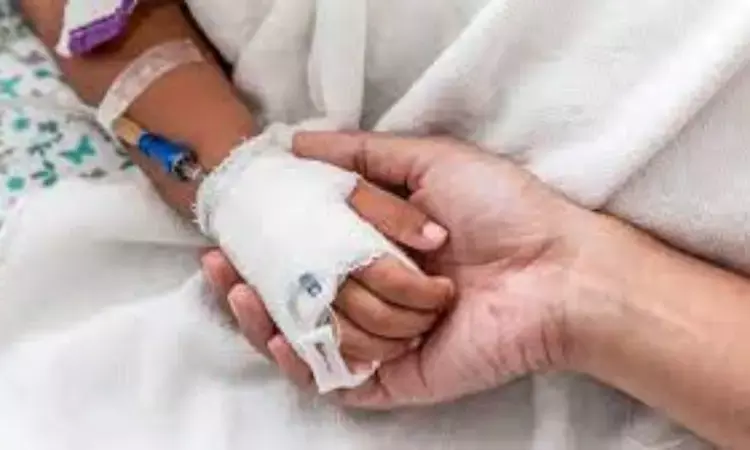- Home
- Medical news & Guidelines
- Anesthesiology
- Cardiology and CTVS
- Critical Care
- Dentistry
- Dermatology
- Diabetes and Endocrinology
- ENT
- Gastroenterology
- Medicine
- Nephrology
- Neurology
- Obstretics-Gynaecology
- Oncology
- Ophthalmology
- Orthopaedics
- Pediatrics-Neonatology
- Psychiatry
- Pulmonology
- Radiology
- Surgery
- Urology
- Laboratory Medicine
- Diet
- Nursing
- Paramedical
- Physiotherapy
- Health news
- Fact Check
- Bone Health Fact Check
- Brain Health Fact Check
- Cancer Related Fact Check
- Child Care Fact Check
- Dental and oral health fact check
- Diabetes and metabolic health fact check
- Diet and Nutrition Fact Check
- Eye and ENT Care Fact Check
- Fitness fact check
- Gut health fact check
- Heart health fact check
- Kidney health fact check
- Medical education fact check
- Men's health fact check
- Respiratory fact check
- Skin and hair care fact check
- Vaccine and Immunization fact check
- Women's health fact check
- AYUSH
- State News
- Andaman and Nicobar Islands
- Andhra Pradesh
- Arunachal Pradesh
- Assam
- Bihar
- Chandigarh
- Chattisgarh
- Dadra and Nagar Haveli
- Daman and Diu
- Delhi
- Goa
- Gujarat
- Haryana
- Himachal Pradesh
- Jammu & Kashmir
- Jharkhand
- Karnataka
- Kerala
- Ladakh
- Lakshadweep
- Madhya Pradesh
- Maharashtra
- Manipur
- Meghalaya
- Mizoram
- Nagaland
- Odisha
- Puducherry
- Punjab
- Rajasthan
- Sikkim
- Tamil Nadu
- Telangana
- Tripura
- Uttar Pradesh
- Uttrakhand
- West Bengal
- Medical Education
- Industry
AAP releases Guidance for Pediatric End-of-Life Care

USA: Some children and teens die abruptly and unexpectedly, while others die after years of a terrible disease. Early advance care planning is advantageous, and the latter days and weeks of life provide an extra opportunity for joint decision-making and reviewing care objectives.
Keeping this in mind, the American Association of Pediatrics (AAP) released pediatric end-of-life care guidelines, including advice for communicating with families and arranging advance care. The pediatrician may be a soothing guide for these families by being familiar with the physical, emotional, spiritual, and logistical aspects of end-of-life care. Pediatric palliative care and hospice materials can help families and workers throughout pediatric end-of-life care.
The study, published in the journal Pediatrics includes end-of-life care objectives, anticipatory counseling about the dying process, predicted signs or symptoms, coding status, intended site of death, and participation with palliative and hospice services for patients and their families. Making use of the strength of the medical home's trusted longitudinal connection, particularly for individuals with medical complexity, benefits the patient and family regardless of location or circumstance surrounding the end of life. Notably, when access to home-based pediatric hospice care is restricted, the medical home may assume the lead in delivering quality end-of-life care.
Jennifer S. Linebarger and team reported that the AAP recommends a specialty version of pediatric palliative care, and that such a team "should be consulted for advanced clinical treatments and complicated decision-making, as well as for social and spiritual needs beyond what the primary care team can provide," and that such a team could help to "optimize complex pain and symptom care, quality of life, prognosis appraisal, conversations about shifting goals, and family and care team support."
They also advocated for complete advance care planning prior to a clinical or emotional crisis, which may involve legal documents, medical directives, or more informal planning. The authors highlighted family bereavement care, noting that the AAP has said that bereavement care should be the standard of care for mourning families and is a public health priority. While emphasizing how families may sense a loss of connection to their "second family" of care providers, they also mentioned that mourning does not work the same way for everyone.
In conclusion, the pediatrician's expertise in the physical, emotional, spiritual, and logistical aspects of end-of-life care enables him or her to be a reassuring guide for these families.
Reference:
Linebarger, J. S., Johnson, V., & Boss, R. D. (2022). Guidance for Pediatric End-of-Life Care. In Pediatrics (Vol. 149, Issue 5). American Academy of Pediatrics (AAP). https://doi.org/10.1542/peds.2022-057011
Medical Dialogues consists of a team of passionate medical/scientific writers, led by doctors and healthcare researchers. Our team efforts to bring you updated and timely news about the important happenings of the medical and healthcare sector. Our editorial team can be reached at editorial@medicaldialogues.in.
Dr Kamal Kant Kohli-MBBS, DTCD- a chest specialist with more than 30 years of practice and a flair for writing clinical articles, Dr Kamal Kant Kohli joined Medical Dialogues as a Chief Editor of Medical News. Besides writing articles, as an editor, he proofreads and verifies all the medical content published on Medical Dialogues including those coming from journals, studies,medical conferences,guidelines etc. Email: drkohli@medicaldialogues.in. Contact no. 011-43720751


